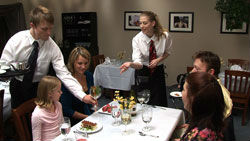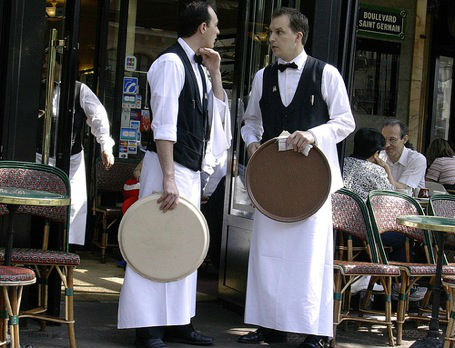Late night diners are always more susceptible to being abandoned by their servers. Not the inevitable complacency you find when it’s closing time—no, the kind where you’re halfway through your appetizers and the waiter approaches to inform you that he is leaving. We’ve all been there. Sometimes, though not always, you’re treated to an awkward goodbye like a Tinder date that never really tindered. Occasionally, there is an uncomfortable exchange where you’re introduced to the incoming server like meeting your new foster parent. This is Phil, he’ll be taking care of you the rest of the night. You’ll do your best to hide the separation anxiety. The first guy was very helpful with the menu and made great recommendations. You wonder if he’s going to share in whatever tip you leave. Moments later, Phil comes over to the table without introducing himself and tries to bully you into clearing your unfinished plates. You immediately miss the original waiter even more. You start to romanticize the relationship you had like missing an ex-girlfriend who dumped you freshmen year.
Most restaurants that keep late hours stagger their employees’ schedules to combat apathy. In theory, the people who came in late should be the most fresh and well-rested to keep the energy level high for the last tables. Unfortunately, it doesn’t always work out that way. In practice, servers and bartenders who know they’re closing the following day use it as license to stay out late and party the night before. So the closing staff may be more rested but it may only mean they’ve had more time to nurse their hangovers. The late staff—as custodians of the tip pool—should be concerned with generating as much money in tips from the last few tables as possible, but its priority is usually closing up shop. The late waiters know their share of the tip pool will be the same no matter what time they leave so it’s not uncommon to find them cutting corners to get out sooner.

In order to facilitate the transition between opening and closing waiters, restaurants with staggered schedules often allow tables to be “transferred” at the end of the night. Management usually prefers this process to be transparent and will require the staff to inform the guest before they leave. The server isn’t fishing for a gratuity when he warns you of his impending departure; tips are likely pooled among the staff. He just doesn’t want you to feel abandoned. Perhaps, more importantly, though, he doesn’t want to risk getting in trouble when you complain that your server disappeared. No matter what, when he approaches the table to end the relationship, it almost always feels like a bad breakup. It’s not you, it’s me.
So how do these staggered schedules work? Let’s say there are four waiters on the roster. With a staggered schedule, two of them will arrive an hour or two early to set up the restaurant and two will arrive shortly before the restaurant opens. The same will be true for support staff like busboys and food runners. Some are expected to come in early to polish silverware and fold extra napkins, others come late and sweep the dining room floors. At the end of the night when things quiet down, the early staff will be dismissed first. Those who started their shifts later will take over the last tables and stay until the last guest leaves.
Staggering shifts can be problematic for service. The server who takes over may not always have the same sense of ownership he has with his own tables. Earlier conversations that the new server hasn’t been privy to—material information about food allergies or time constraints for example—can be lost in the shift change and lead to hiccups in service. Continuity is an essential component of great service and political coups midway through your meal can send even the greatest experience off the rails.
As much as it sucks to leave guests hanging in limbo, staggered schedules are a necessary evil. In great restaurants, you’ll barely notice when your table has been transferred—when everyone is so deeply invested in your care, the seams are invisible. They make it look easy, but it isn’t. Restaurant work is physically and emotionally exhausting. Atrophy is a daily struggle and, at the end of the day, keeping the staff fresh is just as important as the freshness of the food.



